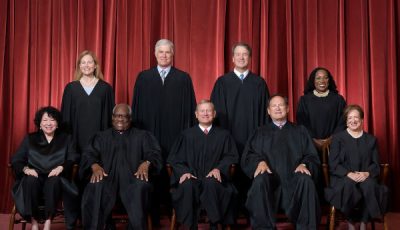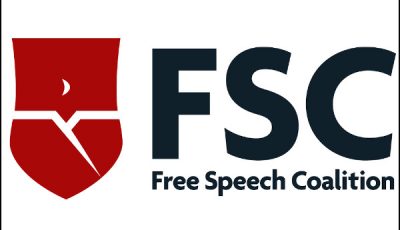John Steele and the Danger of Thinking You’re Smarter Than Everyone Else
 I think most reasonably bright (and even many not-so-bright) people have suffered from Smartest Guy in the Room Syndrome (“SGitR”) at some point in their lives. After all, faith in our own intelligence isn’t a bad thing to have, in itself – but taken to extremes, or applied in the wrong context, that faith can be a very dangerous thing.
I think most reasonably bright (and even many not-so-bright) people have suffered from Smartest Guy in the Room Syndrome (“SGitR”) at some point in their lives. After all, faith in our own intelligence isn’t a bad thing to have, in itself – but taken to extremes, or applied in the wrong context, that faith can be a very dangerous thing.
As I see it, SGitR is a central factor in the pathetic tale of Prenda Law and its principals, John Steele and Paul Hansmeier, both of whom have recently been sentenced to long stints in prison. For Hansmeier (who still has an appeal of his sentence pending), the term is 14 years. For John Steele, who was sentenced Tuesday, the term is 5 years.
Even handled properly and within the constraints of law, professional ethics and court procedure, the sort of mass copyright litigation in which Hansmeier and Steele engaged is highly controversial. For example, I’m not aware of anyone accusing Lincoln Bandlow, the attorney who represents Strike 3 Holdings (the copyright holder to works distributed by Tushy, Blacked and other Greg Lansky brands) of honeypot schemes, or having a financial stake in the cases he’s handling, or any of the other unethical and/or illegal things Hansmeier and Steele did – and yet one court has termed Bandlow’s cases a “high-tech shakedown” and has said he’s treating the court “not as a citadel of justice, but as an ATM.”
This response on the part of courts isn’t new, either – from the very beginning of mass copyright litigation on the part of porn companies, courts around the country began to fret about the very real possibility of the prospect of public embarrassment being weaponized against defendants in these lawsuits, leading them to settle not because they were truly liable, but to avoid being publicly tarred as perverts.
With Prenda, as soon as targets of their legal threats began to fight back, began to question the quality of their evidence and the technology that helped gathered it, Hansmeier and Steele had to know their cases would receive added scrutiny by the courts, the media and the public. Any reasonably humble person might have responded to this increased scrutiny by exhibiting greater caution – by slowing down in the sending of settlement demand letters, perhaps, or being more selective in the cases they brought to court.
Not so Hansmeier and Steele, who were so convinced their scheme was airtight that they chose to double-down instead of backing off the throttle. Not only did they increase the pace of their litigation threats, they opted to become clandestine porn producers and distributors, obtaining and creating content for the express purpose of seeding torrents with it, then filing lawsuits against those who downloaded the videos.
As stated in Steele’s 2017 plea agreement, Hansmeier and Steele “executed a scheme to fraudulently obtain millions of dollars in copyright lawsuit settlements by deceiving state and federal courts throughout the country. The defendants – both lawyers – used shame entities they controlled to obtain copyrights to pornographic movies, some of which they filmed themselves… When Steele and Hansmeier ensnared someone in their trap, they filed false and deceptive copyright infringement lawsuits that concealed their role in distributing the movies, as well as their significant personal stake in the outcome of the litigation.”
On the one hand, if you remove the blatant ethical and legal transgressions it involved, Steele and Hansmeier’s scheme was clever. On the other hand, it was only clever to the extent it remained unknown – and their conduct in trying to continue their ruse was anything but clever.
It’s true, as noted in Steele’s plea agreement, that when defendants fought back against the lawsuits, Steele and Hansmeier “dismissed the lawsuits rather than risk their scheme being unearthed” – but in so doing, they also encouraged outside observers to believe the lawsuit claims were weak and unsupported by persuasive evidence, which further emboldened future recipients of their demand letters.
Along the way, the lawyers and their other Prenda cohorts made attempts to reduce scrutiny of their filings by asking the court to accept them under seal, to avoid the “embarrassment” that ensued when other attorneys, bloggers and journalists critiqued their filings. It was a Hail Mary pass that failed spectacularly, touching off a true Streisand effect moment, in which the filings pleading for secrecy to avoid mockery became the subject of the very sort of mockery they were attempting to forestall.
Through much of this, Steele and Hansmeier would occasionally engage their critics directly, chiding bloggers in comment sections, bragging about the financial windfall they were enjoying from settlements and generally disparaging all their critics as ignorant of the law.
Make no mistake – I’m not bemoaning the fact Steele and Hansmeier failed to get away with their scheme. I’m glad they were caught, glad they’re going to prison, and very glad they’ll be unable to practice law in the future.
It’s just that the part of me that loves stories about grifters, con men and scammers can’t help but note the obvious flaws in these schemes and ponder how the perpetrators may have done things differently – and in reading about Hansmeier and Steele, I can’t stop thinking about a line from Glengarry Glen Ross: Where did you learn your trade?!?













